Exhibitions
Open Panoràmic
This new edition of Open Panoràmic is coordinated by curators Xavier de Luca and Houari Bouchenak.
Open Panoràmic is an artistic call for national authors working on audiovisual projects based on photographs, videos, texts, computer graphics, webdocs, or the hybridization of these techniques.
The works presented may be documentary or experimental in nature or be a visual essay.
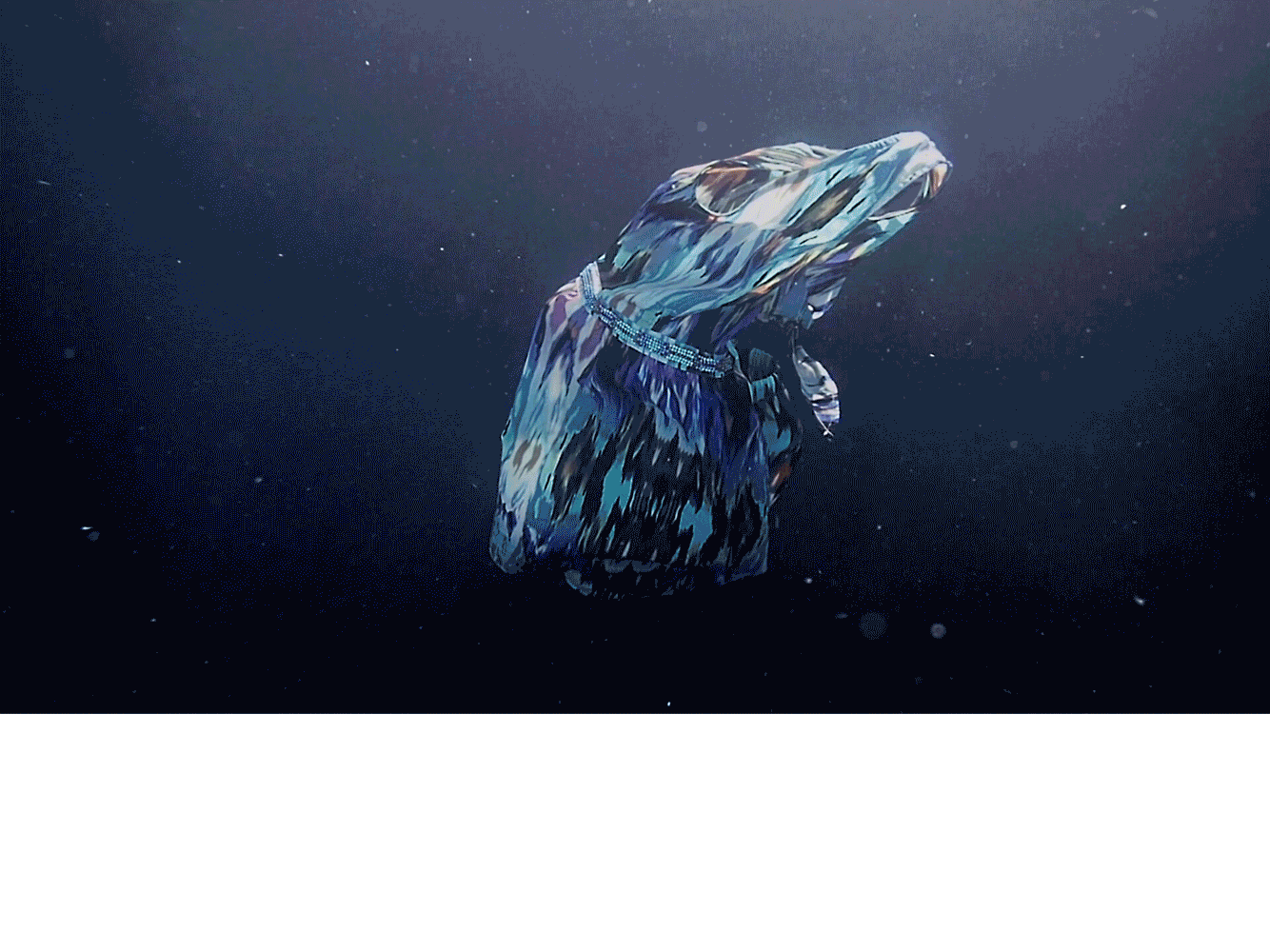
JISER – Xavier de Luca
Curator
Xavier de Luca (Barcelona, 1980) has focused his training in the field of contemporary art, photography and cultural management. Art historian, he obtained the DEA in Mediterranean Cultural Studies at the University Rovira i Virgili of Tarragona (2004-2006) and the Master in Contemporary Art at the University of Barcelona (2010-2011).
Since 2004, he is responsible for collection and projects at the Fundació Suñol in Barcelona, and one of the founding members and director of Jiser Reflexions Mediterrànies.
He has been coordinator of the international platform Trans-Cultural Dialogues between 2012 and 2017, which organized the interdisciplinary festival DJART, which took place in Algiers in 2014. He has curated the Focus Maghreb (2016) and Focus Mediterrània (2017) programs, within the framework of the Swab International Contemporary Art Fair, which presented for the first time in Barcelona a wide selection of art spaces and collectives based in the southern Mediterranean.
In 2021 he curated with Houari Bouchenak the exhibition Barzakh. Between worlds, selected in the call Nuro of Casa Árabe and PHotoESPAÑA, which could be seen in Madrid and in 2022 at Casa Árabe in Córdoba.

JISER – Houari Bouchenak
Curator
Houari Bouchenak (Oran, 1981) is an Algerian curator, photographer and cultural manager. In 2006, he joined the association La Grande Maison de Tlemcen (Algeria), which allowed him to experiment with fields of photographic and curated storytelling based on literary stories. A few years later, he reinforced his practices by training at the Université Paul Valéry (Montpellier) and at the archives section of the Magnum Photos agency (Paris).
Co-founder and member of Collective220, founder and manager of La Maison de La Photo (Tlemcen/Algeria), he taught photography and exhibition management at the art department and the architecture department of the University of Tlemcen. He currently collaborates with Jiser (Barcelona) as a cultural manager and curator. After graduating in industrial chemistry, he continued his studies in Cultural and Intercultural Projects Engineering (IPCI), then in Research and Creation in Plastic Arts at the Université de Bordeaux-Montaigne.
His reflections are nourished by literature and philosophy but especially by the encounter of people and/or territories. His creations and curatorial research are essentially interested in what constitutes the human condition through spaces of time marked by memory, movement and traces. The visual medium is for him a language but also a field of plastic and curatorial experimentation, nourished by the will to regenerate creation through immanent actions through praxis.
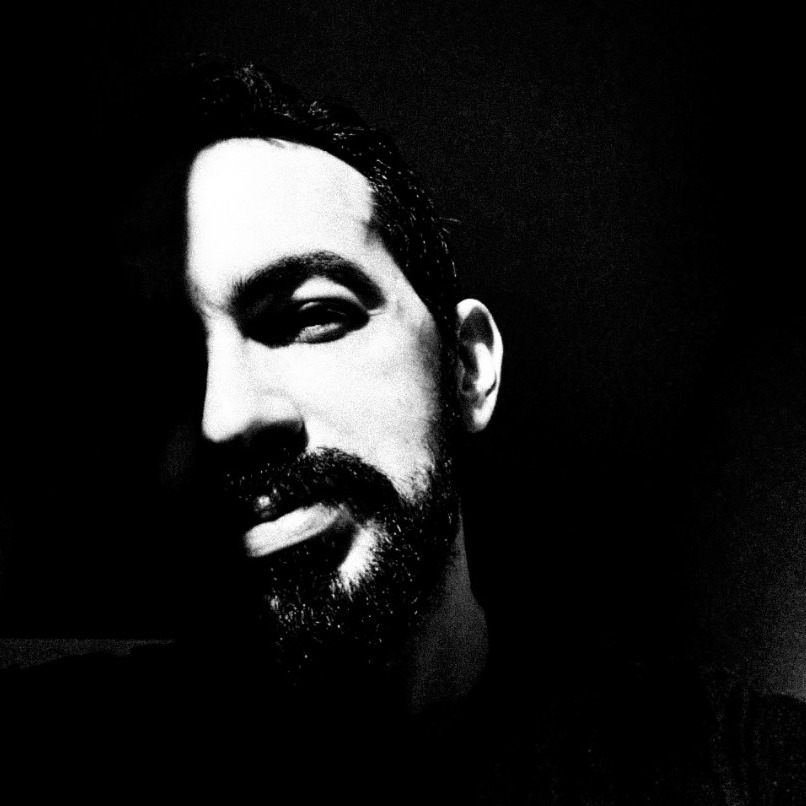
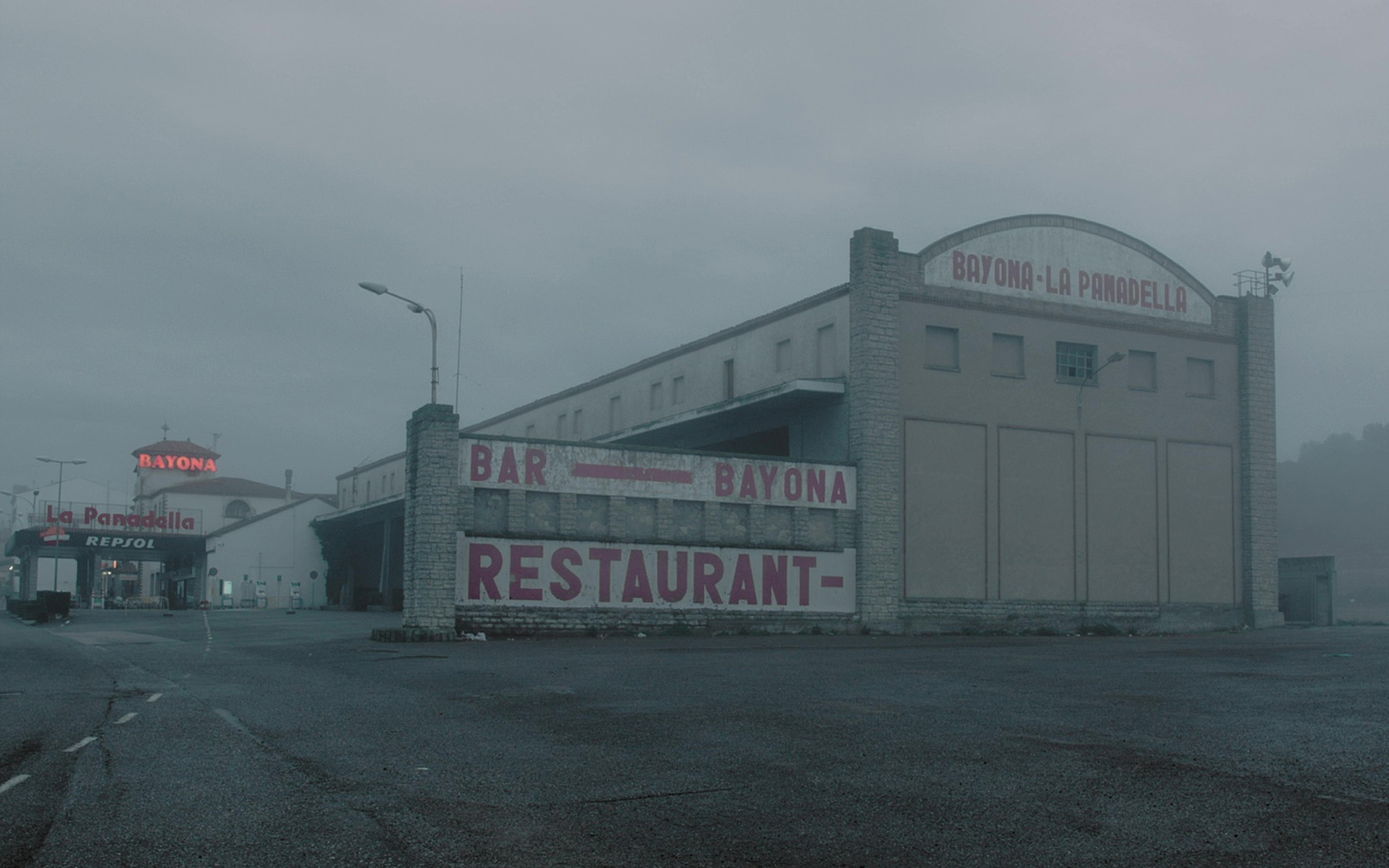
La Panadella
Joel Jiménez Jara
“La Panadella” is a geographic (due to its location and its role as a passageway) and temporal (due to its aesthetics and nostalgic atmosphere) island where life manifests through moments, cycles, and silences. It is a place where different times, stories, and records coexist—a place haunted by its past, caught between existing and being forgotten.
This small village in the Anoia region of Catalonia bears scars that suggest a life seemingly suspended, while also reflecting a socio-cultural context of a ‘dead’ Spain, a mythology of oblivion caused by displacement.
Joel Jimenez Jara aims to metaphorically inhabit the memory of the landscape, establishing a connection with its inhabitants and visitors to explore sensory experiences and reveal the atmospheres where stories, myths, imagination, and reality coexist.
Joel Jiménez (Costa Rica, 1993) is a multidisciplinary artist living and working in Spain. His practice operates at the intersection of documentary and action, exploring the intersections between history and environmental psychology. Jiménez incorporates collective memories, histories, myths and the emotional resonance of space to disrupt linear historical narratives and examine the traces of trauma and power that shape our relationship between past and present. Her work analyzes spaces with layered histories, evolving identities, and stagnant conditions, providing a platform to reflect on the complexities of human relationships with the environment.
Jiménez’s projects span diverse media, including installations, film and books.
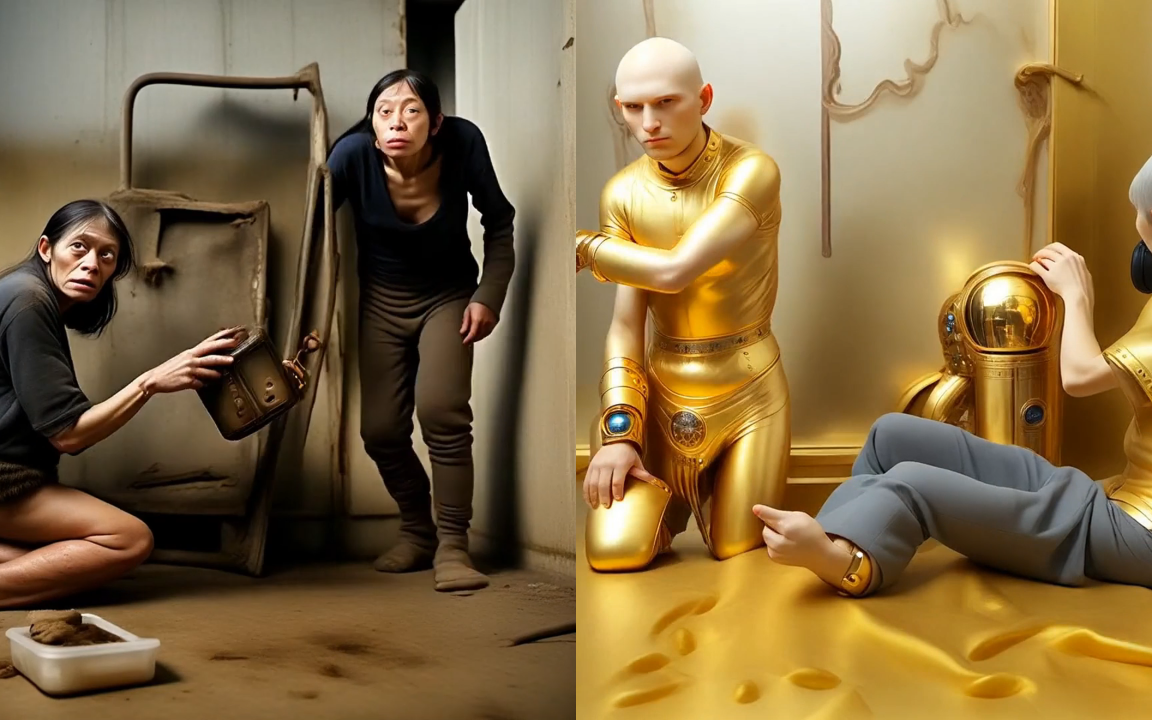
Doble juntos los de oro y los de arcilla (Double Together the Golden and the Clay Ones)
Osvaldo Cibils
A medley of wandering and repeated chapters, featuring two distinct stylistic transformations. The characters, situated in various socio-economic and technological contexts, act passively in a world that is closed to comprehension.
Osvaldo Cibils (Montevideo, 1961). Artist. His works are oriented towards the realization and production of drawings on A4 paper and digitalization; artistic actions with electronic devices and software; video performances; micro street performances; videos, images and sounds with Artificial Intelligence resources.
Since 1997 he participates assiduously in various events and physical and online art exhibitions nationally and internationally, among them: Festival. Puebla, Mexico (2024), International Festival of Performance-art and Audiovisual Formats. Buenos Aires, Argentina (2023), Festival Internacional de Videodança do RS – FIVRS. Porto Alegre, Brazil (2023), Festival MIXTUR. Festival de nova creació sonora de Barcelona. Fabra i Coats – Fàbrica de Creació, Barcelona (2022), Piksel 21. Bergen, Norway (2021), among others.
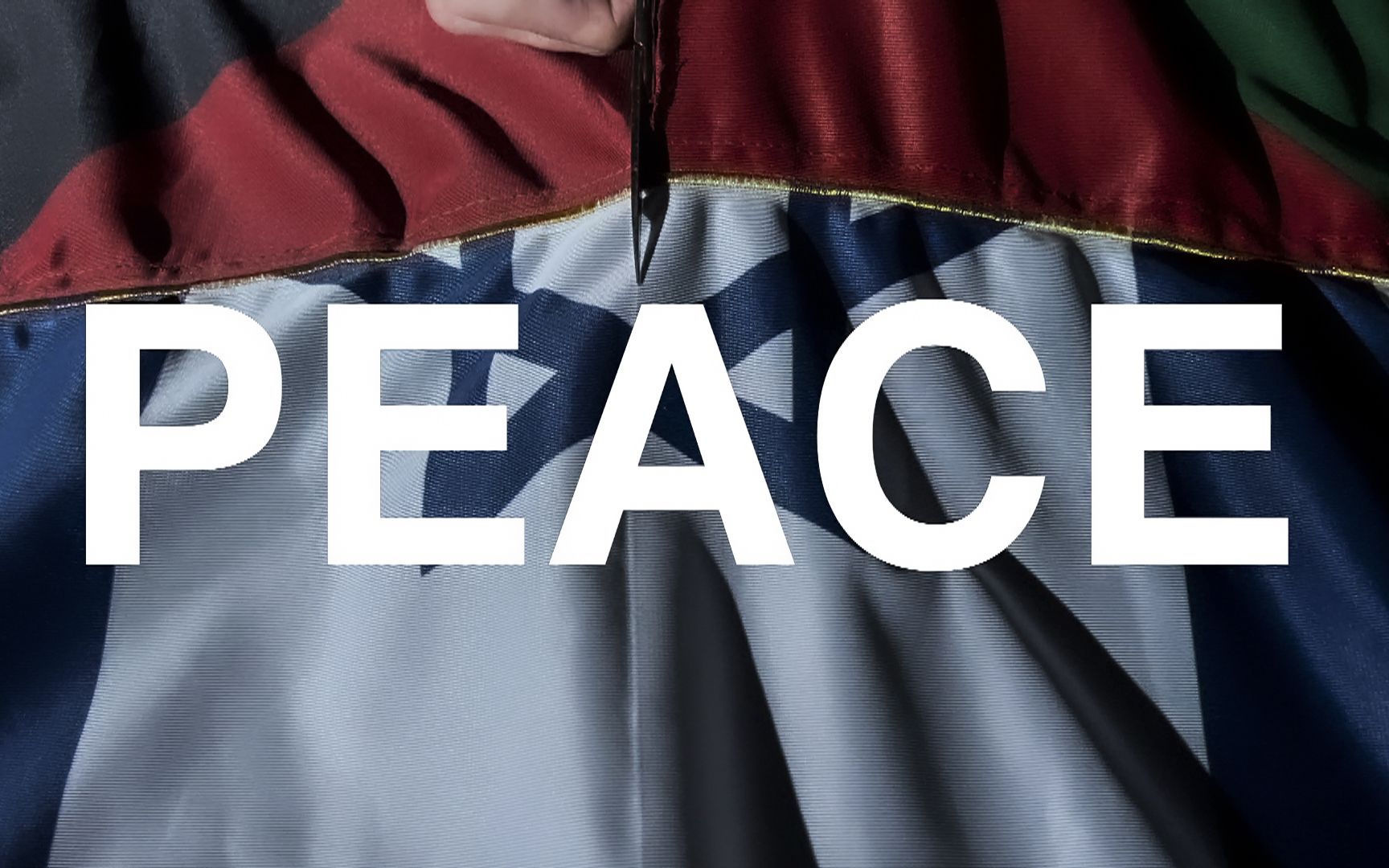
Kintsugi
Ramon Guimarães
Accompanied by a visceral mix of natural elements and sounds of war, Kintsugi immerses us in the chaos and beauty of opposing forces. This dissonant symphony offers a bucolic perspective on the battlefield. Kintsugi confronts us with the dichotomy of ‘peace’ and ‘war,’ alternating these words in white and red on a black background. The words are displayed rapidly in twenty-one sentences about war and peace, creating a cycle of repetition. As the speed gradually decreases, the viewer can reflect on the profound statements about conflict and the quest for peace. The speed then increases again, mirroring the cyclical nature of extremism and polarization in society. Concurrently, an image of a sewing machine appears intermittently, using a golden thread to stitch together the flags of Israel and Palestine, among others. A weaver appears to carve and sew the flags with the golden thread, creating a patchwork flag symbolizing unity through the Japanese kintsugi technique. This juxtaposition of war’s brutality with peace’s idealism invites contemplation of the fragile balance between destruction and creation, chaos and harmony, and the possibility of healing and reconciliation amid extremism’s fractures.
Ramon Guimarães (Barcelona, 1968). He studied Fine Arts at the University of Barcelona, where he developed the ability to merge theory and practice, shaping his vision of art as a means of social intervention.
With a multidisciplinary approach, in his artistic practice lies the construction of fluid and dissident identities. His actions act as tools to trigger provocative dialogues and challenge conventional perceptions. To this end, he invites the audience to actively participate in the creation of new narratives, breaking with rigid structures and encouraging diversity of perspectives, awakening consciences, encouraging critical reflection and generating meaningful reflections on contemporary issues.
He has presented his performative works at MACBA, Arts Santa Mònica and Homesession in Barcelona; La Laboral in Gijón, Matadero in Madrid; ARBAR, la Muga Caula in Girona; and, Aire in Santiago de Compostela among others.
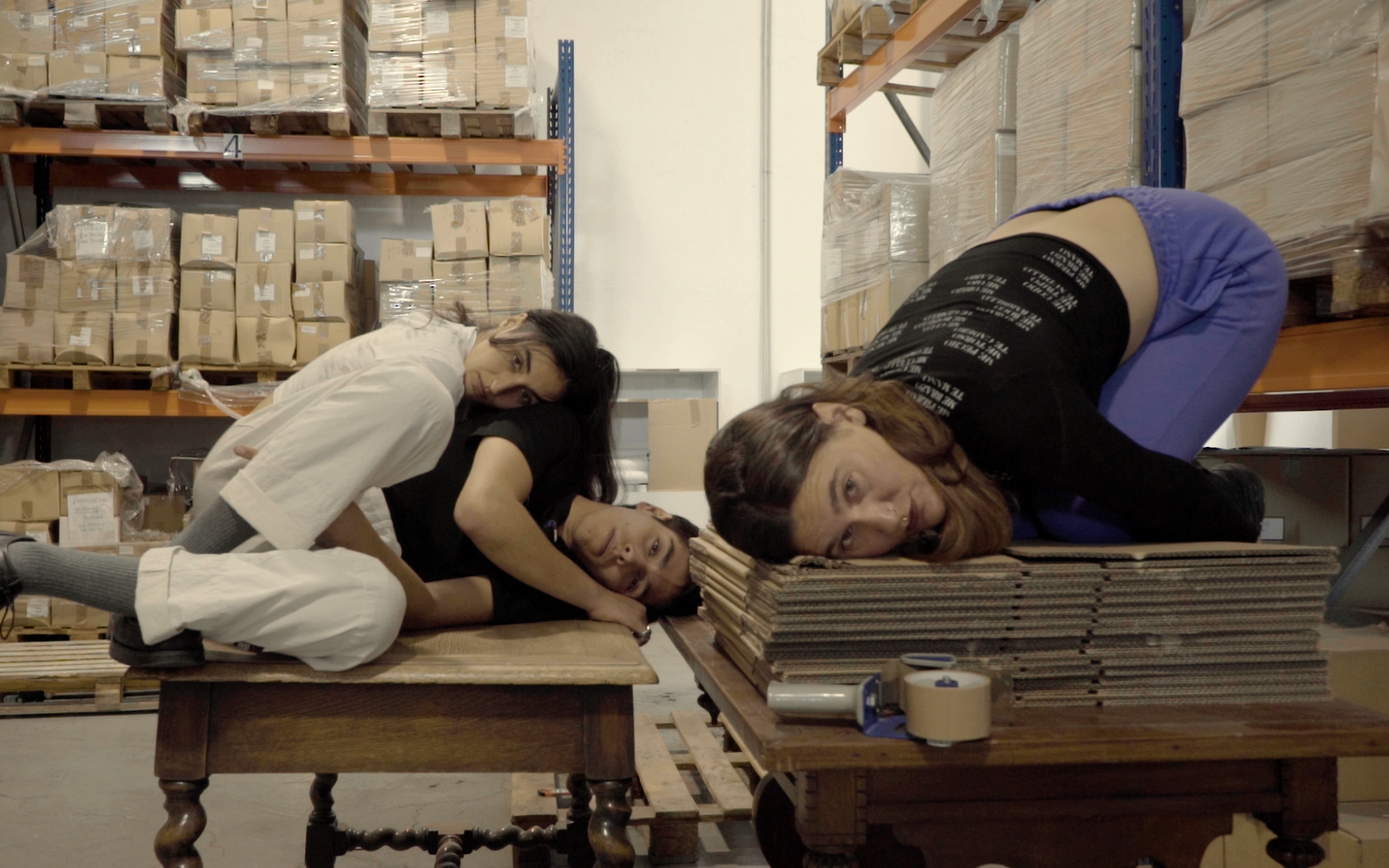
Ejercicios de Almacenaje (Storage Exercises)
Izaro Ieregi González
“Storage Exercises” is a video in which the camera explores an art gallery. The works are awaiting consideration for the ERTIBIL award. The film examines the building’s architecture, featuring three objects that act as focal points. Subtitles also become objects, presented in three languages. The piece reflects on the act of storing and preserving in relation to emotions such as love, desire, and discomfort, serving as a point of departure for meanings that filter into a specific space and contemporary art system.
Izaro Ieregi González (Algorta, 1987). She works from performance with a sculptural notion. Referring to issues such as social structures or historical contexts. Especially sensitive to the vulnerability, precariousness and potentiality of the bodies that inhabit them. This manifests itself between sculpture and dance, between film and installation, between somatic and text. Working in these “in-betweens” allows Ieregi to work freely. The artist tries to find her own language functioning in each place in a specific and differentiated way. Her subjectivity is filtered through the collective work. This way of working results in crossings of meanings and multiple layers that intertwine each context/place in the future, past and present.
Graduated in Fine Arts and Master in Art and Research at UPV/EHU (2013), she furthered her training at JAI (Institute of Artistic Practices) and completed her studies at Dutch Art Institute DAI Art Praxis (2022).
She has shown her work in different venues with projects such as Evil Eye, Tabakalera (2023), The Good Falling, Het Wilde Weten (2023), she has also made several performances: Conjugate One to Each Other, Centrale Fies and Tabakalera (2021, 2023); Touch Me Loud, C. C Amaia (2023); Me Cuello, Me Cabezo, Te Ombligo, RKE and Casa Kuna (2021, 2023), Encontrarás la manera, Artium (2020); Lo hacemos dentro, Artium (2020).
She was a founding partner of OKELA, an independent space based in Bilbao (2013-2018). She has given talks and workshops at the University of Frankfurt, Getxoarte, Tabakalera, MACBA, National University of Argentina or Xiamen University. She has received grants and awards such as Bilbaoarte Production Grant, Basque Government Production Grant, ERTIBIL BIZKAIA Award, Studio KURA Residency (Japan) or the Basque Contemporary Art Internationalization Program EAS EZE. She has also participated in artistic residencies at Het Wilde Weten, Rotterdam (2022) Tabakalera, San Sebastian (2018), Chinese European Art Center CEAC, Xiamen (2017) and Fundación Bilbaoarte, Bilbao (2016, 2023).
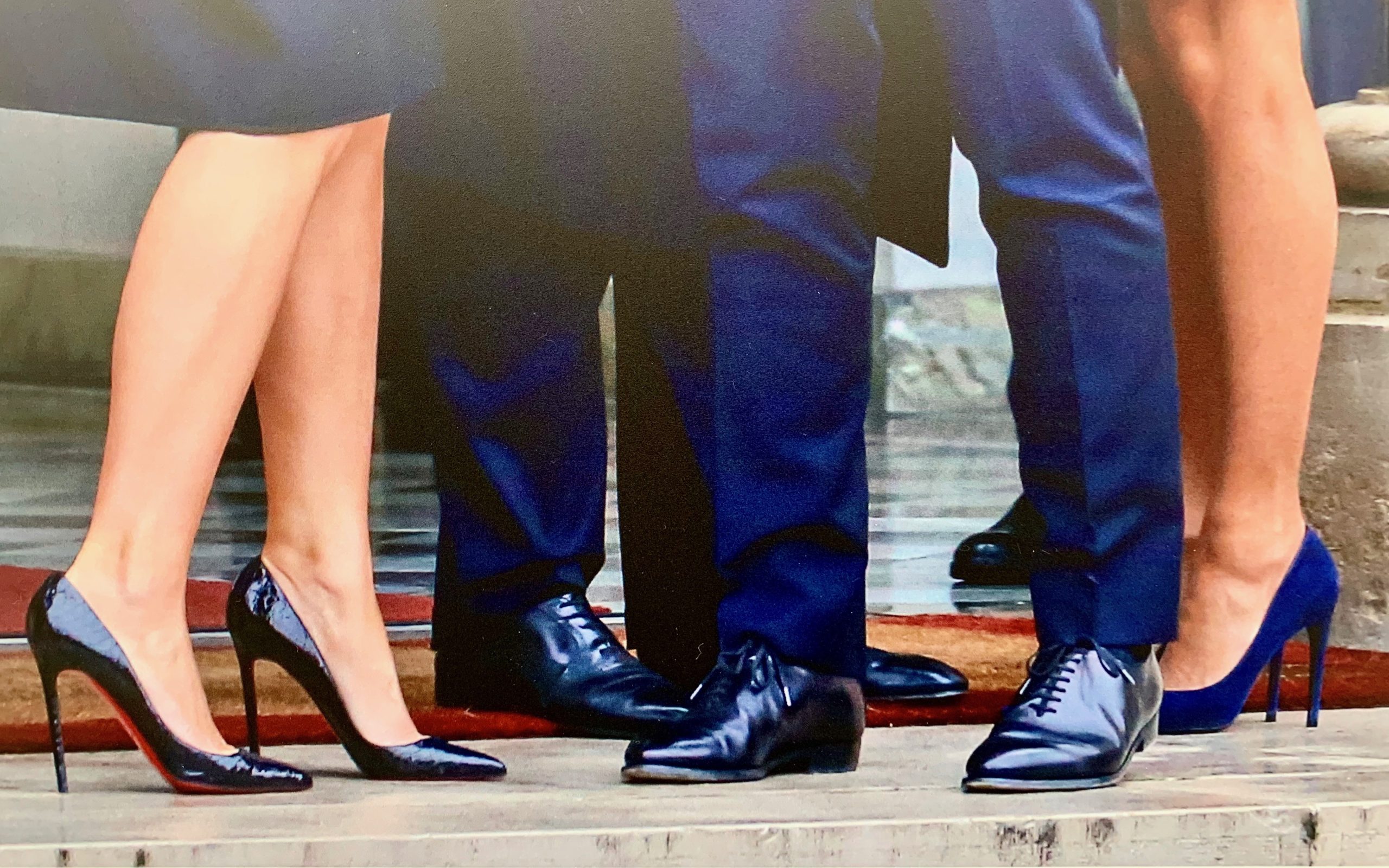
Trump Park Donald Trump’s Intimate Photo Album
Jean-Matthieu Gosselin and Ullic Morard
Trump’s presidency highlighted the appeal of populist authoritarianism for a significant portion of North Americans. The response to the attack on the US Capitol signifies the consolidation of this movement.
Politics has become binary, viral, and unreflective.
The election of political leaders is crucial, and understanding life and education is key to the future of democracy.
Political confrontation now relies on basic identities, simplistic assumptions, kitsch aesthetics, and procrastination. Polarization permeates all discussions—political, intellectual, social, artistic—fostering hatred, political and social exclusion, and prioritizing money as a fundamental value.
Trump is a significant symbol.
Trump Park: Donald Trump’s Intimate Photo Album is a graphic exploration by Jean-Matthieu Gosselin and Ullic Morard that denounces the absence of debate, political violence, ‘consented fascism,’ media monopolization, and pervasive falsehoods.
The album reflects on the words of Abraham Lincoln: ‘No man has a long memory for lying.’
Jean-Matthieu Gosselin (Libourne, 1960). Graduated in museology and art history (École du Louvre and Sorbonne). He worked for years as a journalist, editorial manager and, later, as Director and CEO of publishing houses in France, Italy, Spain, and Mexico.
In 2013, he suffered a big stroke. Over the next five years, he underwent a long rehabilitation at the Madrazo Medical Center in Barcelona. In 2015 he began phototherapy courses; then in 2017 and 2018 he followed “The professional photography studies course” at the Grisart Escola Internacional de Fotografía – Visual Culture Tech Education in Barcelona, from which he graduated.
His photographic works have been exhibited in different contexts and countries:
During the “Off” of Les Rencontres de la Photographie d’Arles 2019 as part of the La Roquette exhibition organized by “Regards Mémoires”; at the Grisart photography school (Barcelona, 2020 and 2022), with “No Surrender” (on his rehabilitation), then “Memorial Drive”; at the Panoràmic Festival (Granollers-Barcelona), 2020, with “No Surrender”, and in a summarized version at the Lumínic Festival (Sant Cugat, 2021).
In spring 2022, he presents “Memorial Drive” (on memory, artistic and aesthetic memories) in Barcelona, and then “Before memories fade” (on Barcelona its photographic territory) at BdB, still in the Catalan city; in the autumn of 2022, he exhibits this latter in Belmont-de-la-Loire in the Auvergne-Rhône-Alpes region in France; it will be exhibited in 2023 in the Rhône department in the town of Cours.
In May 2023 he exhibited his work “Au nom de l’amitié” (on his vision of the spiritual) at the Prieuré de Grandmont located in Villeloin-Coulangé (France); exhibition which will be presented in Sainte-Suzanne in the 1st quarter of 2024. He exhibited “Memorial Drive” at Les 54th Rencontres de la Photographie d’Arles 2023.
In July 2024 he exhibited in Las Corts in Barcelona a new work: “Getaway Memories”; and in October he will present “Before memories fade” in Fouchères-Saint-Valérien (Yonne – France).
Ullic Morard (France, 1980) born in France in 1980, lived most of his life in Italy, where he studied at the Faculty of Architecture of the Polytechnic of Turin. Then he took photography courses, including workshops with the “American agency Seven”. He graduated from the “Narrative Itinerary Course of the Grisart International School of Photography” in Barcelona in 2018.
For 16 years and the years 2008 he has been producing series of photographs including his project “Dark Night” completed in 2015, followed by participation in the “The Others” festival in Turin in 2015, then in the “Head On” photography festival in Sydney in 2016, which concludes the festival’s Finalist Awards.
He participated in a group exhibition at the 2018 “Turin Photography Festival”.
He participates in the “Off” of Les Rencontres de la Photographie d’Arles 2019 as part of the La Roquette exhibition organized by “Regards Mémoires”; the same year, Ullic worked on documentary projects: a report in Cambodia, then one in Ceylon, followed by reports in the Australian desert.
In 2020 he participated in an exhibition in France, in Annecy; and in 2021 he exhibited at the “Head On” photography festival in Sydney.
In 2022 he participates in a group exhibition in Annecy.
He presented a new work “Tesseract” during Les 54th Rencontres de la photographie d’Arles 2023.
Through his academic training Ullic approaches architecture, geometry, the purity of lines, textures, as well as nocturnal appearances, particularly in the landscape.

Llista de llibres en català cremats a Catalunya el 1939 (List of Catalan-Language Books Burned in Catalonia in 1939)
Miquel García
The exact figures for the number of books burned and the burnings carried out during the early post-war years are unknown. However, various instances of book burnings have been documented throughout Catalonia. In Barcelona, experts estimate that 70 tonnes of books were destroyed.
After the war, the regime aimed to eliminate Catalan, banning the language and erasing it from public life. Francoists prohibited the use of Catalan on signs, changed town and village names, and destroyed cemetery plaques with Catalan inscriptions.
List of Catalan-Language Books Burned in Catalonia in 1939 presents an alphabetically ordered inventory of authors and works by Catalan writers, as well as foreign writers translated into Catalan, all persecuted by the fascists. The list was compiled through research in various sources, newspaper archives, and files.
Miquel García. PhD student in Fine Arts. Master in Research and Artistic Production (U.B). He finished his studies with a grant from the University of Barcelona at The Cooper Union (New York).
He has carried out artistic residencies at: CCE (2017, Santiago de Chile); El Ranchito (2011, Madrid); Casa das Caldeiras (AECID, 2010, São Paulo); Chang Dong Art Studio (Seoul, 2009, Auschberg-Unesco Grant); Axenéo7 (2008, Quebec, CUENCA Grant); MCOARTE, Porto (2008, Joan Miró Foundation Grant Mallorca).
His work has been recognized with awards and grants: Beques Crea (Ajuntament de Barcelona, 2022), Cossos (Centre Cultura Carme, Valencia, 2021); Kreas (Girona, 2021); Obra Abierta (2019, Fundación Caja de Extremadura, 1st prize); Bienal de Mislata (2019, 1st prize); Pilar Juncosa Sotheby’s Scholarship (2018 and 2007); Guasch Coranty Foundation Scholarship (2016); Extraordinary Prize in Fine Arts (2016); Julio Antonio Sculpture Biennial (2014, Tarragona, 1st prize); Sala d’Art Jove edition prize (2014); Generalitat d’investigació i creación scholarship (2007, 2013, 2015 and 2021).
He has exhibited individually at: ADN Gallery (2022, Barcelona) Centro de Lectura (2021, Reus), Isabel Hurley Gallery (Málaga, 2019), Homesession (2017); Àngels Barcelona (2014 and 2016); M.A.M Tarragona (2015); Dare Dare Center (2010, Montreal).
He has presented his work collectively at: ARCO; Centre Georges Pompidou (Paris and Malaga); Fundació Tàpies; Artes Santa Mónica; Casa de Cultura de Girona; Centre d’Art Contemporani Ac.Vic; Corcorán Gallery (Washington); Centro Conde Duque (Madrid) and at Biennials in Havana, Mardin (Turkey) and Turku (Finland).

A Piece of Paper
Aitana López Rodrigo
“A Piece of Paper” is an 8-minute video that examines a job layoff. Using real footage combined with AI-generated images, the video plays with form and choreography, as well as still and moving images, to highlight and critique the violence inherent in corporate language.
Aitana López (Madrid, 1994) is a Spanish artist working between Rotterdam and Madrid. She studied Fine Arts at the Complutense University of Madrid and the University of Paris 8, later obtaining an MA Fine Arts at the Piet Zwart Institute in Rotterdam.
Drawing on her own work and personal experiences, her work is based on a critique of the patriarchal and neoliberal values that surround us. With a language that lies between the audiovisual and the plastic, her practice also proposes an active reflection between form and content.
His work has been exhibited and screened in different art spaces and independent film festivals such as MediaLab Prado, Embajadores cinemas in Madrid, the Eye Film Museum in Amsterdam, WORM Central Station in Rotterdam or Frihamnstorget in Stockholm.
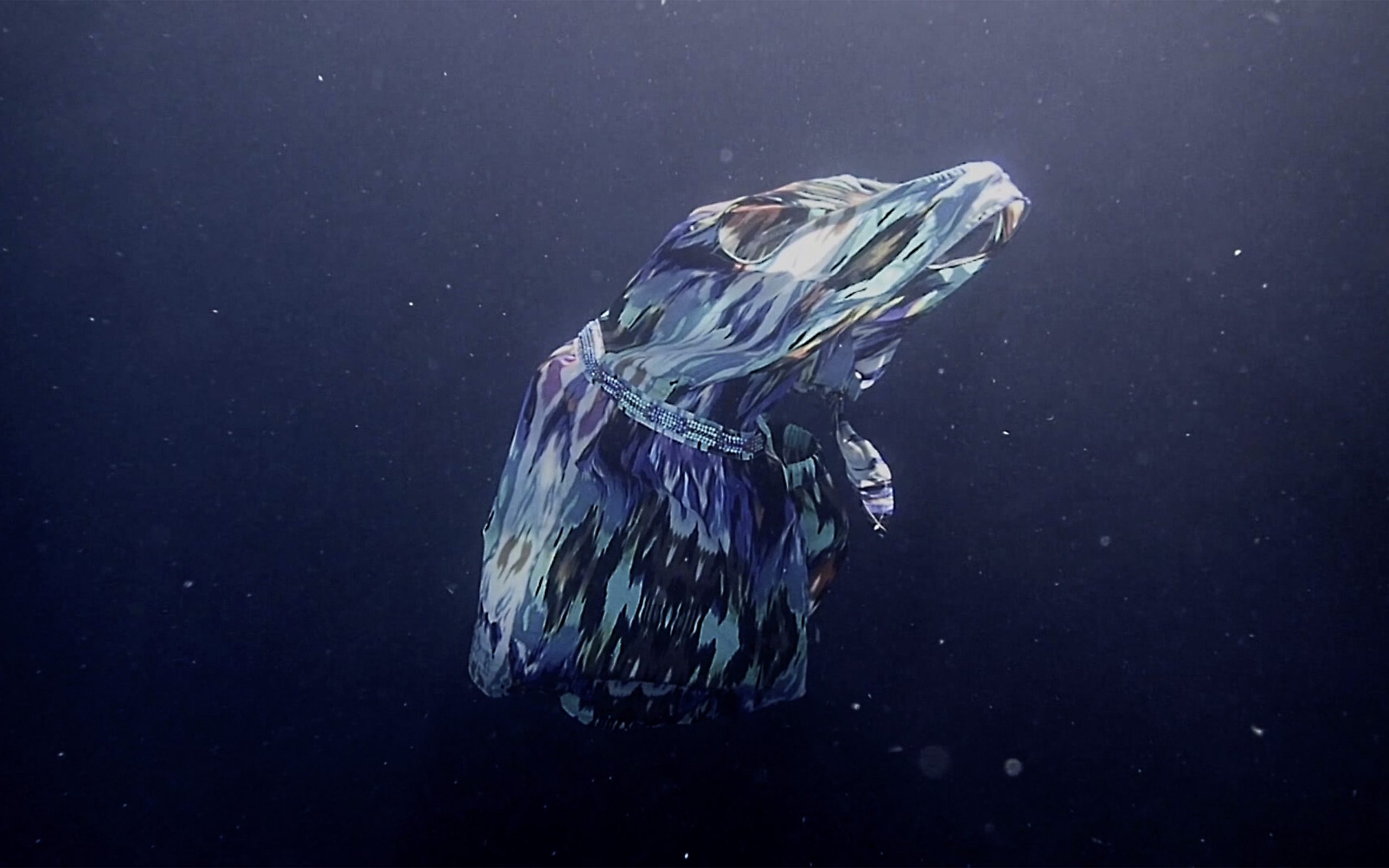
Deshabitadas I (Uninhabited I)
Carmen Isasi
Deshabitadas I addresses the isolation faced by migrants fleeing desperate situations in their home countries, choosing to cross the Mediterranean or the Atlantic to reach Europe in search of a dignified life. Women, in particular, suffer even more as victims of sexual violence in this context. The piece explores the dark sea that swallows their bodies, prompting questions about their whereabouts, origins, and histories. What is not visible is what is evoked.
Carmen Isasi (Bilbao, 1958) multidisciplinary artist who incorporates new media and languages to her work as new projects and works demand it.
With a degree in Fine Arts from the Universidad del País Vasco, she held her first exhibitions in Bilbao.
In the 90’s she moved to Madrid, where she currently lives, to study for a Master’s Degree in Aesthetics and Theory of the Arts at the Universidad Autónoma. She also attends the Contemporary Art workshops at the Círculo de Bellas Artes, with Chema Cobo and Nancy Spero, being selected for the exhibition “Propuesta 92” at the Circulo de BBAA (Madrid) and “Propuesta” at Arte et Amicitiae (Amsterdam).
She progressively integrates new materials and media in her work, such as video, installations, performances, and more recently, Virtual Reality and sound installation.
Her latest projects include De las sombras, Congelados de la memoria, A resultas de lo que cae and Deshabitadas.
She has had numerous solo and group exhibitions, and has participated in national and international exhibitions and festivals.

